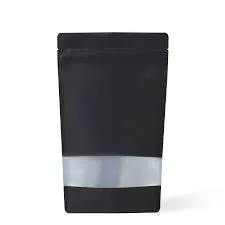- Afrikaans
- Albanian
- Amharic
- Arabic
- Armenian
- Azerbaijani
- Basque
- Belarusian
- Bengali
- Bosnian
- Bulgarian
- Catalan
- Cebuano
- chinese_simplified
- chinese_traditional
- Corsican
- Croatian
- Czech
- Danish
- Dutch
- English
- Esperanto
- Estonian
- Finnish
- French
- Frisian
- Galician
- Georgian
- German
- Greek
- Gujarati
- haitian_creole
- hausa
- hawaiian
- Hebrew
- Hindi
- Miao
- Hungarian
- Icelandic
- igbo
- Indonesian
- irish
- Italian
- Japanese
- Javanese
- Kannada
- kazakh
- Khmer
- Rwandese
- Korean
- Kurdish
- Kyrgyz
- Lao
- Latin
- Latvian
- Lithuanian
- Luxembourgish
- Macedonian
- Malgashi
- Malay
- Malayalam
- Maltese
- Maori
- Marathi
- Mongolian
- Myanmar
- Nepali
- Norwegian
- Norwegian
- Occitan
- Pashto
- Persian
- Polish
- Portuguese
- Punjabi
- Romanian
- Russian
- Samoan
- scottish-gaelic
- Serbian
- Sesotho
- Shona
- Sindhi
- Sinhala
- Slovak
- Slovenian
- Somali
- Spanish
- Sundanese
- Swahili
- Swedish
- Tagalog
- Tajik
- Tamil
- Tatar
- Telugu
- Thai
- Turkish
- Turkmen
- Ukrainian
- Urdu
- Uighur
- Uzbek
- Vietnamese
- Welsh
- Bantu
- Yiddish
- Yoruba
- Zulu
Versatile Uses and Benefits of EVA Foam Filament in 3D Printing Projects
The Rise of EVA Foam Filament in 3D Printing A Comprehensive Overview
The world of 3D printing has seen remarkable advancements over the past decade, with new materials continually emerging to expand the capabilities of this innovative technology. One such material that has garnered attention is EVA foam filament. Ethylene-Vinyl Acetate (EVA) is a copolymer that combines the properties of ethylene and vinyl acetate, resulting in a versatile material that is lightweight, flexible, and durable. In this article, we will delve into the characteristics, benefits, applications, and future prospects of EVA foam filament in the realm of 3D printing.
Characteristics of EVA Foam Filament
EVA foam filament is distinguished by its unique combination of properties, making it suitable for a wide range of applications. Its flexibility allows for the creation of soft and cushioned parts, while its lightweight nature contributes to reducing overall weight in printed objects. EVA filament is also known for its elasticity and resilience, enabling it to return to its original shape after deformation. Furthermore, it exhibits excellent chemical resistance, making it suitable for contact with various substances.
One of the standout features of EVA foam filament is its ease of use in 3D printers. It generally has a lower printing temperature compared to other filaments, such as ABS or PLA, making it accessible even for beginners. The material adheres well to the print bed and is less prone to warping, resulting in smoother prints with fewer failures.
Benefits of Using EVA Foam Filament
The advantages of using EVA foam filament in 3D printing are numerous. First and foremost, its softness and flexibility make it ideal for creating prototypes and products that require a cushion, such as wearable devices, sports equipment, and protective padding. The material's ability to absorb shocks and vibrations also makes it highly sought after for applications in automotive and industrial sectors.
Another key benefit of EVA foam filament is its potential for customization and versatility. The filament can be easily colored, allowing designers to produce vibrant and visually appealing products. Moreover, with advancements in printing technology, users can experiment with different infill patterns and densities, providing endless creative possibilities.
EVA foam filament is also an environmentally friendly option compared to certain traditional materials. As a recyclable material, it aligns well with the growing trend towards sustainability and eco-conscious manufacturing practices. This aspect appeals to designers and companies looking to minimize their environmental impact while still producing high-quality products.
eva foam filament

Applications of EVA Foam Filament
The applications of EVA foam filament are diverse, spanning various industries. In the realm of fashion, designers are utilizing this material to create unique footwear, bags, and accessories that combine style with comfort. The cushioning properties of EVA make it an excellent choice for soles and insoles, enhancing overall user experience.
In the realm of fitness and sports, EVA foam filament is used to print protective gear, mats, and equipment. Its shock-absorbing capabilities provide athletes and trainers with the necessary protection during high-impact activities. Furthermore, in the field of education, EVA foam items can serve as teaching tools, such as models and props, engaging students in hands-on learning experiences.
Moreover, EVA foam filament is making its mark in the realm of product prototyping. Designers and engineers can quickly produce flexible and durable prototypes to test form and fit, streamlining the development process and reducing time to market.
Future Prospects
The future of EVA foam filament in 3D printing looks promising, with continuous developments in material science and printing technology. As more manufacturers adopt this versatile filament, we can expect innovative applications to emerge, further enhancing the capabilities of 3D printing.
Moreover, as sustainability remains a critical focus for industries worldwide, the development of biodegradable variants of EVA foam filament could open new avenues for eco-friendly printing solutions.
In conclusion, EVA foam filament stands out as a game-changer in the world of 3D printing, thanks to its unique properties and wide-ranging applications. As this material gains traction, it not only empowers creators with newfound flexibility and creativity but also contributes to a more sustainable future in manufacturing. The journey of EVA foam filament is just beginning, and its impact on the 3D printing landscape is sure to leave a lasting impression.













